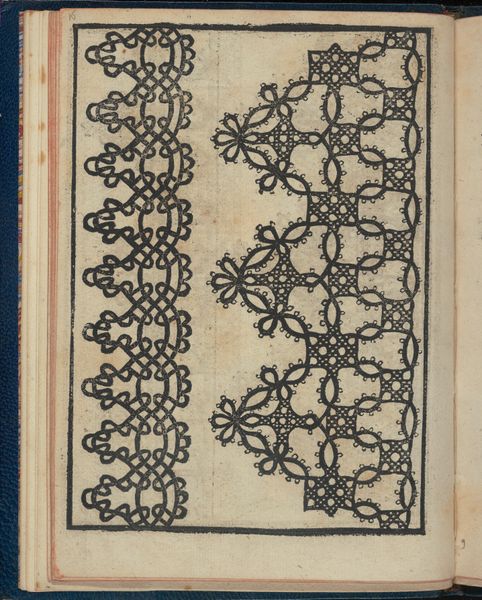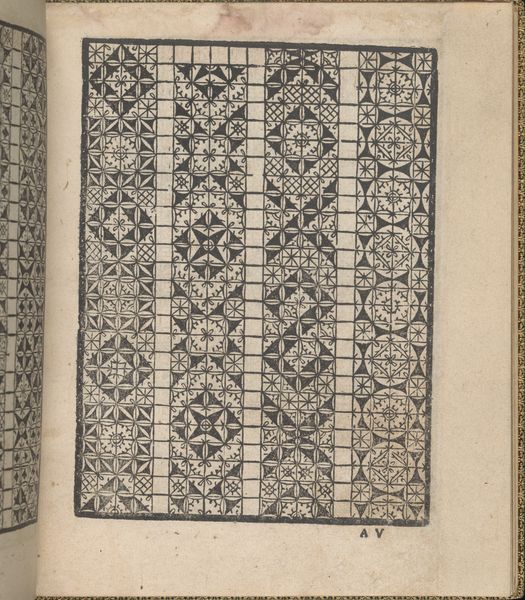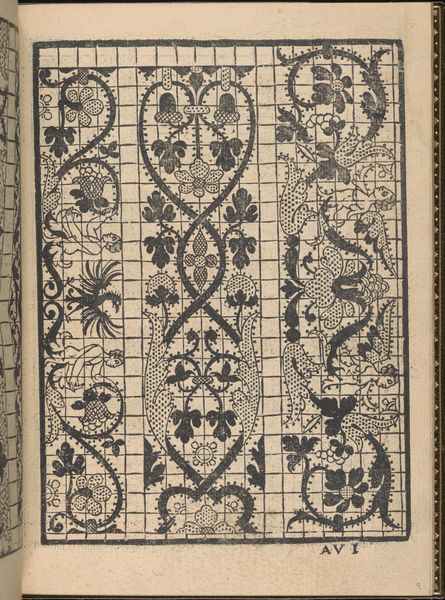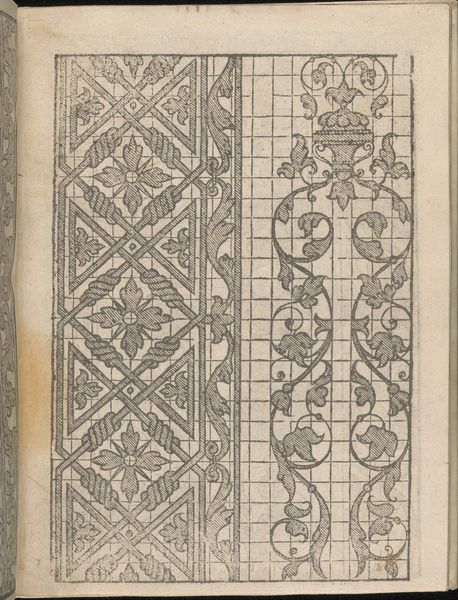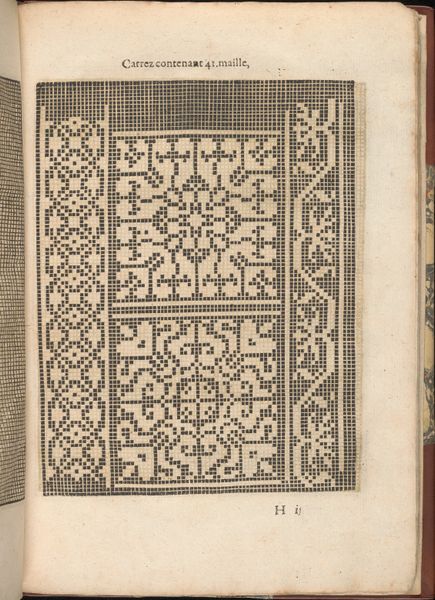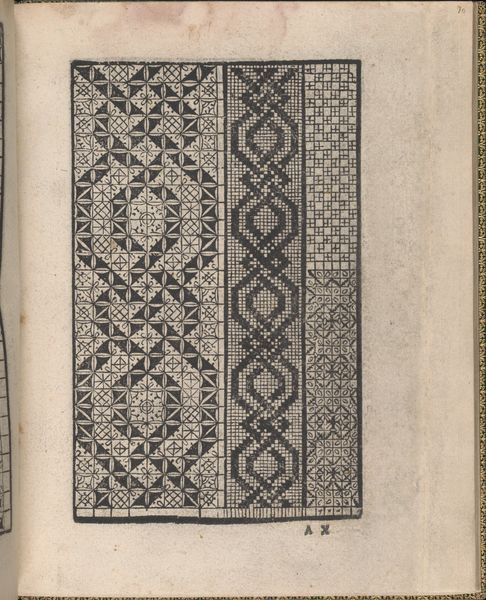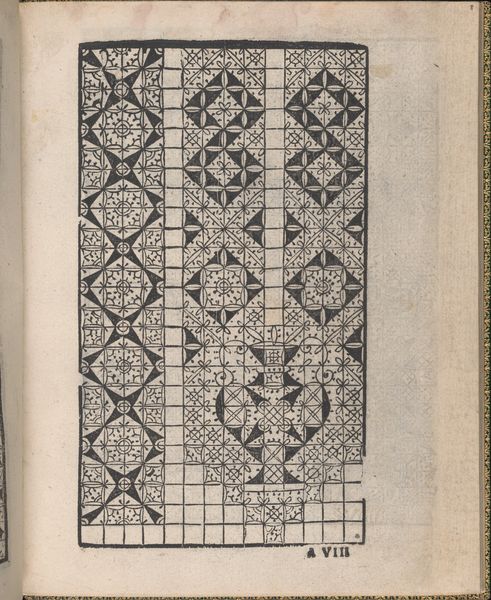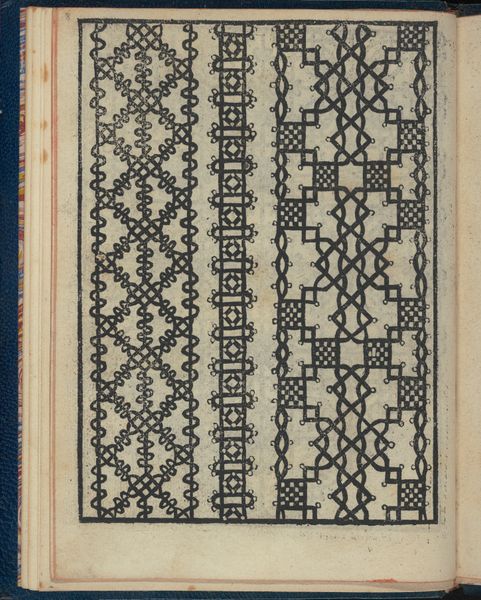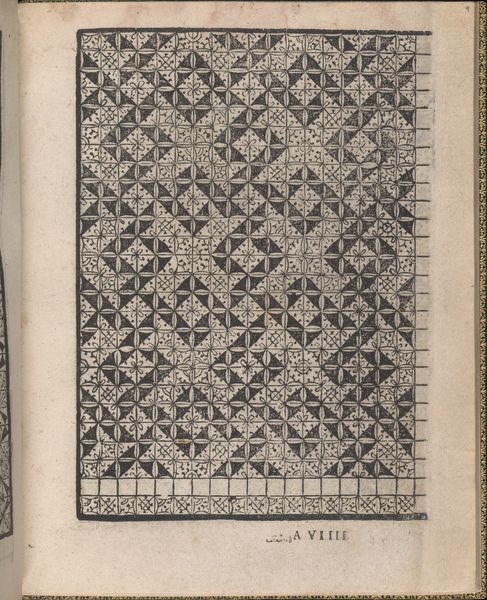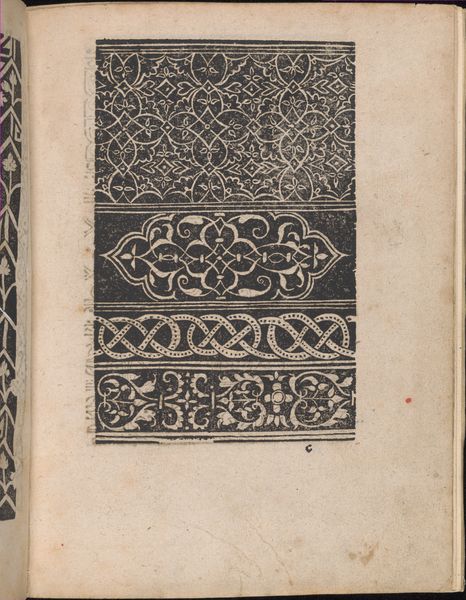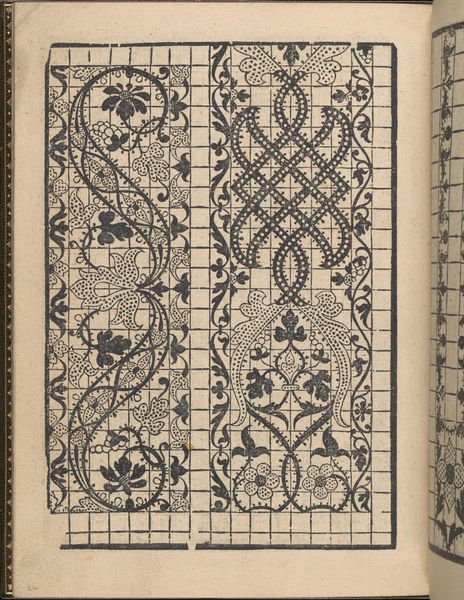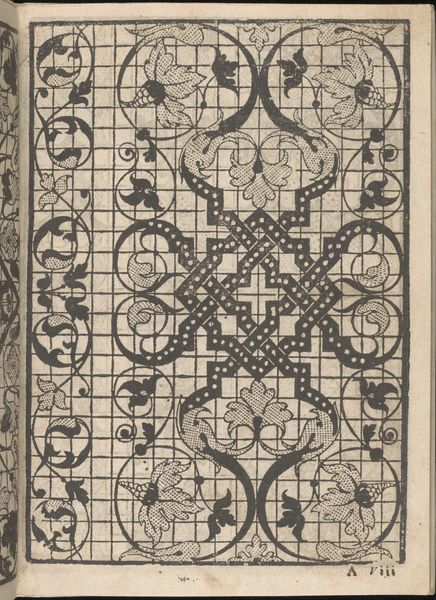
Le Pompe: Opera Nova, page 2 (recto) 1557
0:00
0:00
drawing, graphic-art, print, engraving
#
drawing
#
graphic-art
# print
#
form
#
11_renaissance
#
geometric
#
line
#
decorative-art
#
engraving
Dimensions: Overall: 8 1/16 x 5 7/8 in. (20.5 x 15 cm)
Copyright: Public Domain
Editor: Here we have "Le Pompe: Opera Nova, page 2 (recto)" created in 1557 by Giovanni Battista and Marchio Sessa. It's a print, seemingly an engraving, filled with intricate geometric patterns. It reminds me of lace or some other delicate textile. What do you see in this piece, particularly from a materialist perspective? Curator: This page offers a fascinating glimpse into the relationship between art, craft, and labor in the Renaissance. It’s not simply a drawing; it’s a pattern book. Consider the labour involved in creating the printing plates, the repetitive movements, the specialized skills needed to transfer these designs. Who were the artisans who used these patterns, and what was their social standing? Were these designs meant for the wealthy elite, or did they circulate more broadly, influencing craft production across different social classes? Editor: That’s interesting, I hadn’t thought about it as a manual. So, its value comes less from the aesthetic, and more from how it facilitated the creation of other objects? Curator: Precisely. The engraving itself becomes a tool, a means of production. It challenges our notions of originality and authorship. The artist, in this case, functions as a facilitator, providing designs that will be replicated and reinterpreted by other makers. Think about the materiality of the print, the paper, the ink, the press: all essential components in disseminating these designs. Where were these materials sourced from, and who controlled their distribution? Editor: It definitely changes how I view the image. I was focusing on the patterns themselves, but the real story is about the people who used this and how. Curator: Exactly! And understanding this challenges the traditional art historical narrative that often privileges individual genius over collective creation and consumption. Considering these aspects reframes our appreciation for these “minor” arts and helps us to understand their vital role in shaping material culture. Editor: Thanks for shifting my focus. It's definitely got me thinking about the larger economic and social systems at play here.
Comments
No comments
Be the first to comment and join the conversation on the ultimate creative platform.
